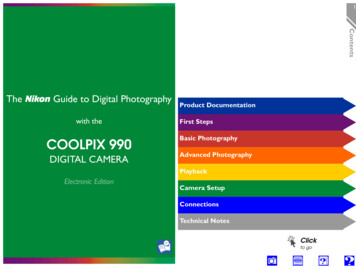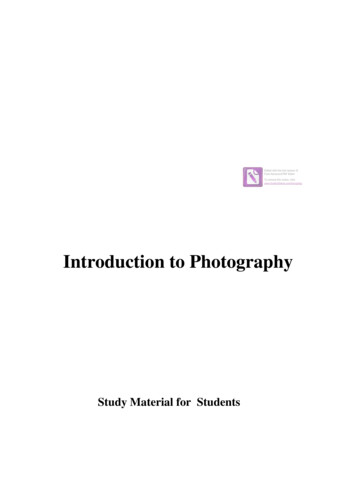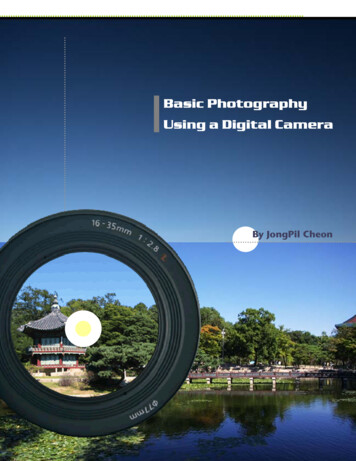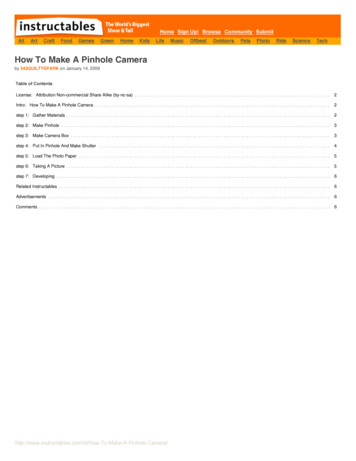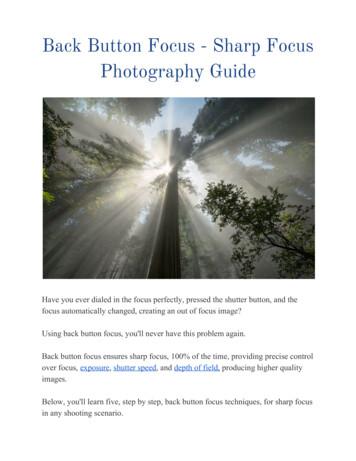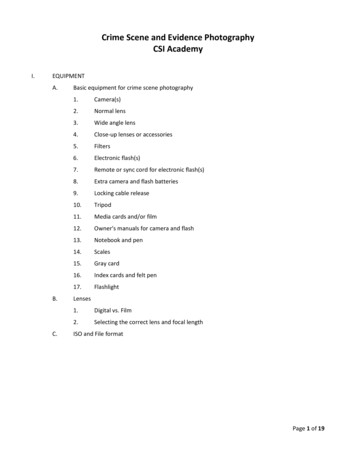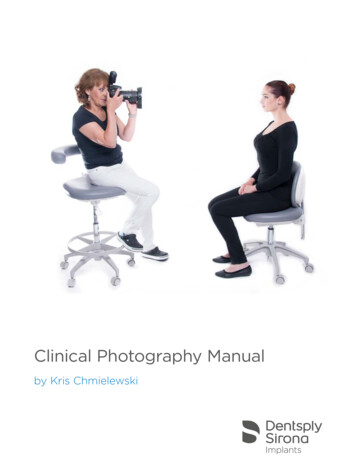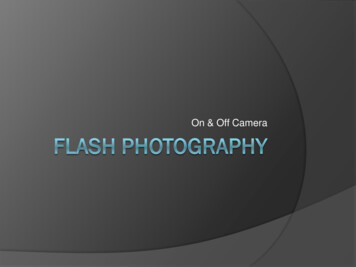
Transcription
On & Off Camera
The Two Types of FlashesTTL flash (Through The Lens Metering) Light and exposure is automatically controlled bysophisticated communications between the flash and cameraManual flash Flash output is manually controlled by power settings.
TTL Flash (Through the Lens Metering)Pros Automatically adjusts lightingResponds in quickly changing and unpredictable shooting situationsOutput of flash can be modified through flash Exposure CompensationCorrect exposure regardless of the aperture or flash-to-subject distanceBest for:Wedding and Event Photography Outdoor Fill Flash Night Portraits Casual shooting
TTL Flash (Through the Lens Metering)Cons Automatic flash evaluations can be fooled and give Incorrect exposures Flash compensation can be cumbersome to access TTL flashes are more expensive TTL flashes are dedicated to one brand Setting up multiple flashes can be complicated and time-consuming
Manual flashProsInexpensive (radio communication for under 100) Operating devices is relatively simple and straightforward Working with multiple flashes is straightforward Manual Flashes are not camera brand specific Modifying adjustments are quick and straightforward Best for:Architectural photography Portrait photography Multiple off camera flash photography Studio photography where consistent results are Important.
Calculating flash exposure(The dealbreaker)Back in the film days, calculating flash exposure either required the use ofan expensive flash meter or estimating off of a flash scale.With the modern digital camera, it's easy to tell whether your exposure iscorrect just by reviewing your image and histogram.
o YN560-IVYongnuo YN560 IV SpeedliteooooBuilt in radio receivers and transmitterPower and zoom adjusted can be controlled through groups remotelypower output comparable to top-of-the-line Canon and Nikon unitsthe flash sells for 70 so it's very affordable to purchase a number of flashesSince there is no US warranty, I recommend buying them from B&H with the Square Deal warranty.
Yongnuo YN560 Speedlite System
Yongnuo YN660 Speedlite
Soft light&Hard light
The larger the lights source thesofter or more diffused the lightbecomes. Diffused light casts a lessdistinct shadow and creates asmoother looking skin tone. Themost common light diffusers areumbrellas and soft boxes. Bouncingthe flash off the ceiling or wall isanother way to get a softer or morediffused lighting effect.
Smaller light sourcescreate hard light. Oncamera flashes and barelight bulbs are commonways of producing thiskind of light. Hard lightproduces very distinctshadows and canemphasize textures onskin.
On Camera Flash
Adding a second flash with umbrella
Flash Sync SpeedA camera flash produces a tremendous amount of light in a very short period oftime. (1/800 - 1/10,000 of a second)Because of this quick burst of light, most modern digital SLRs have a maximumshutter sync speed of approximately 200th of a second. Some cameras can goa little higher and some need to be lower, but exceeding the maximum syncspeed when using flash will cut off the light from reaching the bottom frame ofyour image200320500When using a dedicated flash, the camera will automaticallyknow not to shoot at a shutter speed faster than its maximumsync speed.When using a manual flash you must keep your shutter speedat or below the maximum sync speed
Cameras with electronic shutters such as high-end point-andshoot's, do not have a flash sync limitations with manual flashes(Oddly my Canon G12 will not allow me to shoot past 250 with adedicated flash but will with a manual flash.)
This images was shotwith my Canon pointand-shoot and allowedme to use a shutterspeed over 500I would not have beenable to get this imageswith an SLR
Dragging the shutterBecause of the quick duration of flashes, shutter speedbecomes irrelevant to the light output of a flash as long as youdo not exceed its sync speed.This means that you can increase the amount of ambient lightindependently of the flash by using a slower shutter speed.
Putting it all togetherFlash gives you more control over your lighting
Flashes allow you tostop action that exceedthe physical shutterspeeds of your camera.
Flashes are an excellent choice for studio work
Consistent lighting during a shoot
Off camera flash can produce excellent close up photography
Fill flash can dramatically improve outdoor photos.
Off camera flash it is my competitive edge in architectural photography.
Off camera flash can produce excellent close up photography Fill flash can dramatically improve outdoor photos. Off camera flash it is my compet
